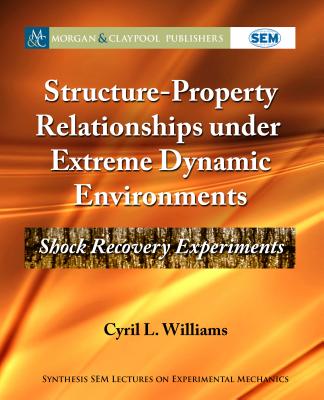Compressible Fluid Dynamics and Shock Waves
Sasoh, Akihiro
- 出版商: Springer
- 出版日期: 2020-01-30
- 售價: $7,780
- 貴賓價: 9.5 折 $7,391
- 語言: 英文
- 頁數: 276
- 裝訂: Hardcover - also called cloth, retail trade, or trade
- ISBN: 9811505039
- ISBN-13: 9789811505034
-
相關分類:
流體力學 Fluid-mechanics、熱力學 Thermodynamics、物理學 Physics
海外代購書籍(需單獨結帳)
商品描述
1. Propagation of pressure waves1.1 Propagation of sound wave1.2 Sound waves from free flight body1.3 Motion of beads system and wave propagation1.3.1 Piston-bead collision1.3.2 Bead-bead collision1.3.3 Motions of piston and beads1.3.4 Characteristic velocities1.3.5 Averaged particle velocity1.3.6 Kinetic energies1.3.7 Compression ratio1.3.8 Force on piston1.4 Pressure wave propagation in collision between solids
2. Motions of gas particles related to thermodynamics2,1 Fundamentals of thermodynamics2.2 Thermal speed and flow velocity2.3 Pressure2.4 Energy and temperature2.5 Ideal gas and its equation of state2.6 Entropy2.7 Enthalpy, total temperature and total pressure2.8 Multi-component gas
3. Basic equations for flow3.1 Conservation equations3.1.1 Conservation of mass3.1.2 Conservation of momentum3.1.3 Conservation of energy3.1.4 Other relations3.1.5 Similarity in inviscid flow3.2 Galilean transformation3.2.1 Inertial frame of reference3.2.2 Galilean transformation3.2.3 Application to flow conservation equations4. Discontinuity4.1 Conditions and categories4.1.1 Rankine-Hugoniot relations4.1.2 Categories4.2 Normal shock wave4.2.1 General relations4.2.2 Relations for thermally perfect gas4.2.3 Glancing incidence4.2.4 Stability of shock wave4.2.5 Shock propagation with boundary layer4.3 Oblique shock wave4.3.1 Relations for oblique shock wave4.3.2 Mach wave4.3.3 Dual solutions4.3.4 Attached and detached shock waves4.4 Instability of discontinuities4.4.1 Rayleigh-Taylor instability4.4.2 Richtmyer-Meshkov instability4.4.3 Kelvin-Helmholtz instability
5. Quasi-one-dimensional flows5.1 Control volume and basic equations5.1.1 Control volume5.1.2 Conservation of mass5.1.3 Conservation of momentum5.1.4 Conservation of energy5.1.5 Equation of state5.1.6 Speed of sound5.1.7 Flow Mach number5.1.8 Relation among derivatives5.2 Flow characteristics5.2.1 Influence coefficients5.2.2 Effects of duct cross-sectional area5.2.3 Effects of heating/cooling5.2.4 Effects of friction5.2.5 Effects of volume force5.2.6 Choking condition5.3 Duct flow with friction
6. System with source terms6.1 Generalized Rankine-Hugoniot relations6.2 Detonation/deflagration6.2.1 Regime of solution6.2.2 Detonation6.2.3 Deflagration6.2.4 Variation in entropy6.2.5 Variation in energy6.2.6 ZDN model6.2.7 Cellular structure in detonation6.3 Ram accelerator6.3.1 Operation principle and performance6.3.2 Derivation of thrust6.3.3 Thermally choking6.3.4 Experiments6.4 General form for jet propulsion6.5 Air-breathing engine
7. Two-dimensional flows7.1 Compression/expansion waves and Prandtl-Meyer function7.2 Prandtl-Meyer expansion7.3 Supersonic flow over a cone7.4 Shock wave reflection7.4.1 Reflection patterns in steady flows7.4.2 Shock polar7.4.3 Two-shock theory7.4.4 Three-shock theory7.4.5 Transition criteria7.4.6 Exercise: Supersonic flow over triangle
2. Motions of gas particles related to thermodynamics2,1 Fundamentals of thermodynamics2.2 Thermal speed and flow velocity2.3 Pressure2.4 Energy and temperature2.5 Ideal gas and its equation of state2.6 Entropy2.7 Enthalpy, total temperature and total pressure2.8 Multi-component gas
3. Basic equations for flow3.1 Conservation equations3.1.1 Conservation of mass3.1.2 Conservation of momentum3.1.3 Conservation of energy3.1.4 Other relations3.1.5 Similarity in inviscid flow3.2 Galilean transformation3.2.1 Inertial frame of reference3.2.2 Galilean transformation3.2.3 Application to flow conservation equations4. Discontinuity4.1 Conditions and categories4.1.1 Rankine-Hugoniot relations4.1.2 Categories4.2 Normal shock wave4.2.1 General relations4.2.2 Relations for thermally perfect gas4.2.3 Glancing incidence4.2.4 Stability of shock wave4.2.5 Shock propagation with boundary layer4.3 Oblique shock wave4.3.1 Relations for oblique shock wave4.3.2 Mach wave4.3.3 Dual solutions4.3.4 Attached and detached shock waves4.4 Instability of discontinuities4.4.1 Rayleigh-Taylor instability4.4.2 Richtmyer-Meshkov instability4.4.3 Kelvin-Helmholtz instability
5. Quasi-one-dimensional flows5.1 Control volume and basic equations5.1.1 Control volume5.1.2 Conservation of mass5.1.3 Conservation of momentum5.1.4 Conservation of energy5.1.5 Equation of state5.1.6 Speed of sound5.1.7 Flow Mach number5.1.8 Relation among derivatives5.2 Flow characteristics5.2.1 Influence coefficients5.2.2 Effects of duct cross-sectional area5.2.3 Effects of heating/cooling5.2.4 Effects of friction5.2.5 Effects of volume force5.2.6 Choking condition5.3 Duct flow with friction
6. System with source terms6.1 Generalized Rankine-Hugoniot relations6.2 Detonation/deflagration6.2.1 Regime of solution6.2.2 Detonation6.2.3 Deflagration6.2.4 Variation in entropy6.2.5 Variation in energy6.2.6 ZDN model6.2.7 Cellular structure in detonation6.3 Ram accelerator6.3.1 Operation principle and performance6.3.2 Derivation of thrust6.3.3 Thermally choking6.3.4 Experiments6.4 General form for jet propulsion6.5 Air-breathing engine
7. Two-dimensional flows7.1 Compression/expansion waves and Prandtl-Meyer function7.2 Prandtl-Meyer expansion7.3 Supersonic flow over a cone7.4 Shock wave reflection7.4.1 Reflection patterns in steady flows7.4.2 Shock polar7.4.3 Two-shock theory7.4.4 Three-shock theory7.4.5 Transition criteria7.4.6 Exercise: Supersonic flow over triangle
作者簡介
Akihiro Sasoh is a Professor at the Department of Aerospace Engineering, Graduate School of Engineering, Nagoya University. He received his Ph.D. from the University of Tokyo in 1989. His research interests include compressible fluid dynamics and space propulsion. He has co-authored more than 200 journal articles and conference papers.














